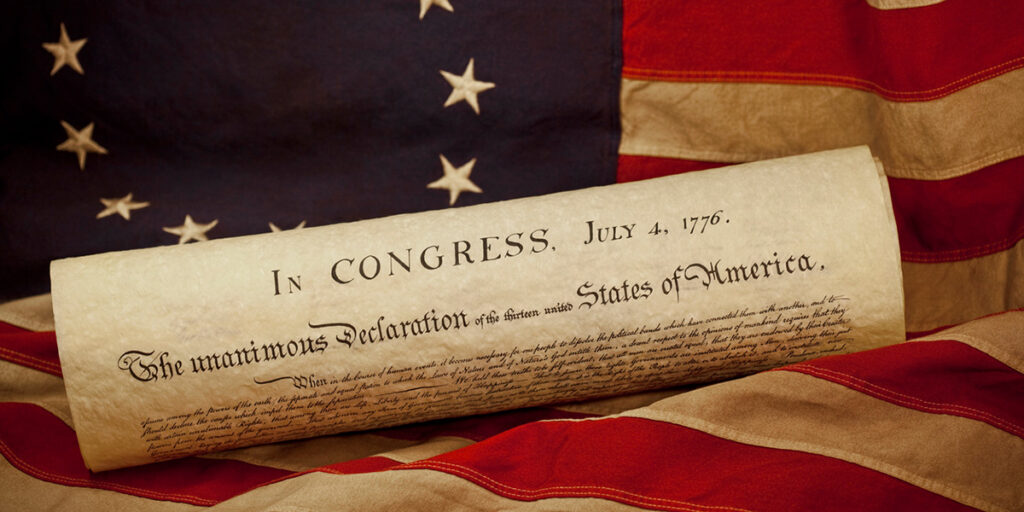Eleven score and 6 years ago, this week, the New York Stock Exchange was formed. Well, sort of. On May 17, 1792, under a buttonwood tree near the corner of Broad and Wall Street, 24 stockbrokers and merchants signed what was later called the “Buttonwood Agreement.” It established the framework for security trading in the newly born United States, which led to the New York Stock Exchange. I believe the tree was taller than the buildings back then. The roads were certainly dirt. George Washington was in his first term as President. Abe Lincoln was not yet born. Most stocks were of commodity related companies. Trading was face-to-face and hand-to-hand. It’s not so anymore, with the vast majority of equity trades on the NYSE now bypassing the floor. They’re mostly done electronically, and processed at a data center in New Jersey. Today, over 80% of daily volume is computer programmed trading. People play much smaller roles. Would you believe that nearly half of daily share volume today occurs in the final 30 minutes of trading? The closing bell matters.
The New York Stock Exchange brought so many iconic American companies public, opening the opportunity for its citizens to invest in the growth. Investment is what catapulted innovation and growth. They go hand in hand. General Electric, the only remaining original Dow Jones Industrial Average stock, had its IPO in 1892. IBM, also known as Big Blue, went public in 1911. The Ford Motor Company had its IPO in 1956, years after Henry Ford passed away. Apparently Mr. Ford adamantly opposed going public, but his son Edsel allowed Ford to IPO 9 years after his father’s death. A decade ago, Visa had the largest ever IPO for an American company. Exactly 6 years ago, to the day, Facebook made its infamous debut as a public company. Like many in Tech, Facebook chose the NASDAQ over the NYSE for its listing. It was a memorable IPO in so many ways. The stock did not start off well.
The Buttonwood agreement was an attempt to establish rules after a financial panic. Previously, there had been no rules or safeguards in place. Many mutually agreed upon deals were abandoned. The panic of 1792 had been instigated by speculative actions by investors that excessively borrowed to make trades, which increased asset prices, but an inevitable sell-off had a cascading effect because of large debt. Sound familiar? A not so dissimilar thing happened in 2008. The Buttonwood agreement helped fortify investment mechanisms and brought confidence back. Without confidence, markets are worthless. Confidence is extremely difficult to earn, but so easy to lose. Especially when it involves money.
The Stock Market is known for its joy as well as its pain. DOW 10K, 20K and 25K were major milestones for the Market. So was “Black Monday” and “Black Tuesday” which earned the name for two meltdowns; one in 1987 and the other in 1929. The Dot.com Bubble Burst and the Lehman failure led to massive Bear Markets and still weigh heavily on investor psyche. It’s human nature to remember the negatives, even beyond the positives. It’s a survival skill since the beginning of time. Despite the various crises throughout history, and there were many, the successes of the US Stock Market tower over the negatives.
The concept of investing is deeply rooted in the American way. We value investing. Not just investing money but investing time, energy, and emotion. It’s about ideas. It’s about hard work. It’s about innovation. It’s trial and error. It requires long-term thinking. We are an imperfect union which inherently strives to be more perfect. It is indeed an evolutionary process. History tends to repeat itself. The key is to learn from lessons and build on them. The great American innovators created products and services before we even knew what we wanted. For years, public demand wanted a faster horse. Henry Ford brought them the assembly line and the Model T. Steve Jobs changed the world with the iPhone. Amazon started off with books, and has built an empire selling pretty much anything and sending it anywhere, quickly and inexpensively. Investment made it happen.
The Market goes up and the Market goes down. Over the course of history, it’s gone up longer but it’s gone down faster. But over the long-haul, it’s paid off big time. A $1,000 investment in Apple’s IPO in 1980 would be worth over $450,000 today. That’s eye-popping isn’t it? Apple’s stock has seen plenty of volatility in its history. It hasn’t always gone up. But it has certainly gone up a lot over a long period of time. The US Stock Market has a lot to show for its 226 years strong.
We are long-term investors who are well-equipped to deal with short-term issues. We’re invested together. We’re invested in you.
Have a nice weekend. We’ll be back, dark and early on Monday.
Mike







